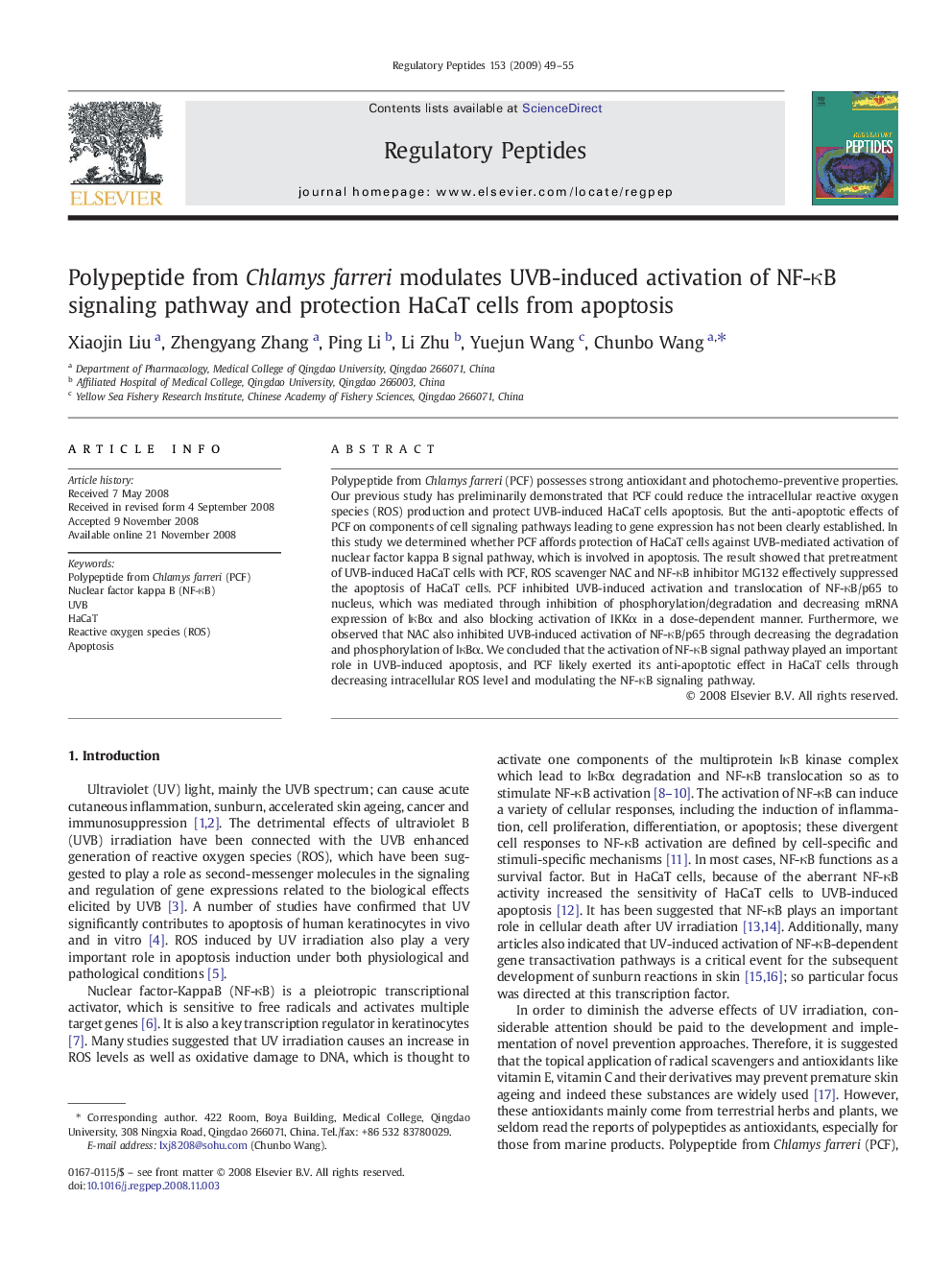| Article ID | Journal | Published Year | Pages | File Type |
|---|---|---|---|---|
| 2022907 | Regulatory Peptides | 2009 | 7 Pages |
Polypeptide from Chlamys farreri (PCF) possesses strong antioxidant and photochemo-preventive properties. Our previous study has preliminarily demonstrated that PCF could reduce the intracellular reactive oxygen species (ROS) production and protect UVB-induced HaCaT cells apoptosis. But the anti-apoptotic effects of PCF on components of cell signaling pathways leading to gene expression has not been clearly established. In this study we determined whether PCF affords protection of HaCaT cells against UVB-mediated activation of nuclear factor kappa B signal pathway, which is involved in apoptosis. The result showed that pretreatment of UVB-induced HaCaT cells with PCF, ROS scavenger NAC and NF-κB inhibitor MG132 effectively suppressed the apoptosis of HaCaT cells. PCF inhibited UVB-induced activation and translocation of NF-κB/p65 to nucleus, which was mediated through inhibition of phosphorylation/degradation and decreasing mRNA expression of IκBα and also blocking activation of IKKα in a dose-dependent manner. Furthermore, we observed that NAC also inhibited UVB-induced activation of NF-κB/p65 through decreasing the degradation and phosphorylation of IκBα. We concluded that the activation of NF-κB signal pathway played an important role in UVB-induced apoptosis, and PCF likely exerted its anti-apoptotic effect in HaCaT cells through decreasing intracellular ROS level and modulating the NF-κB signaling pathway.
